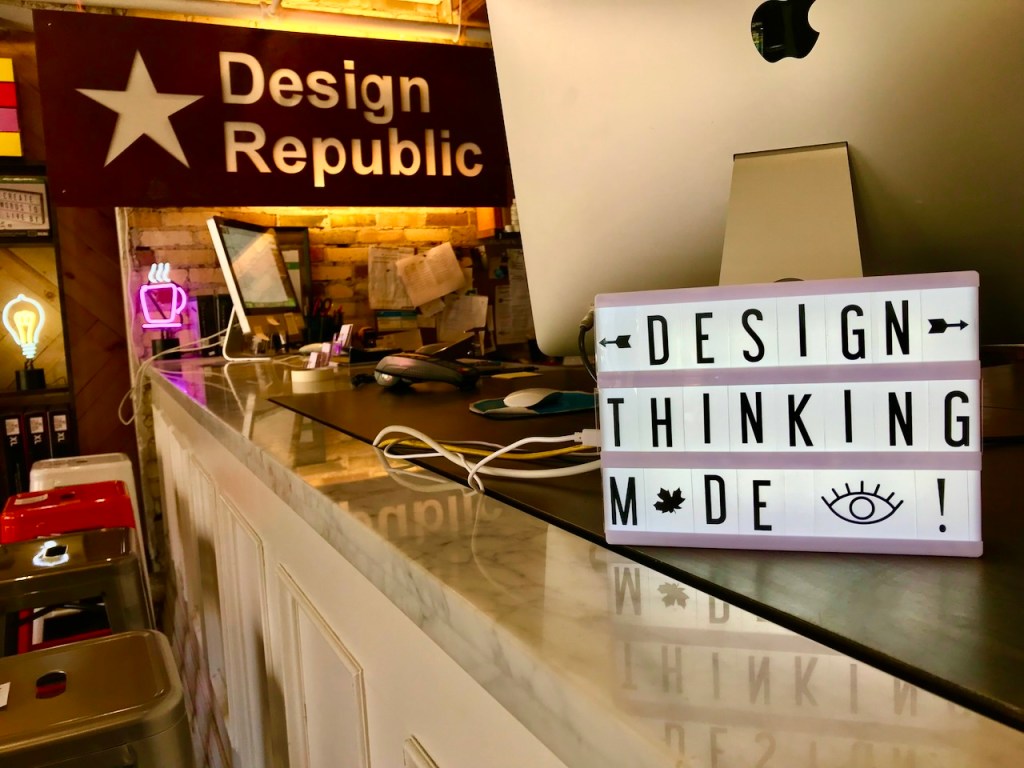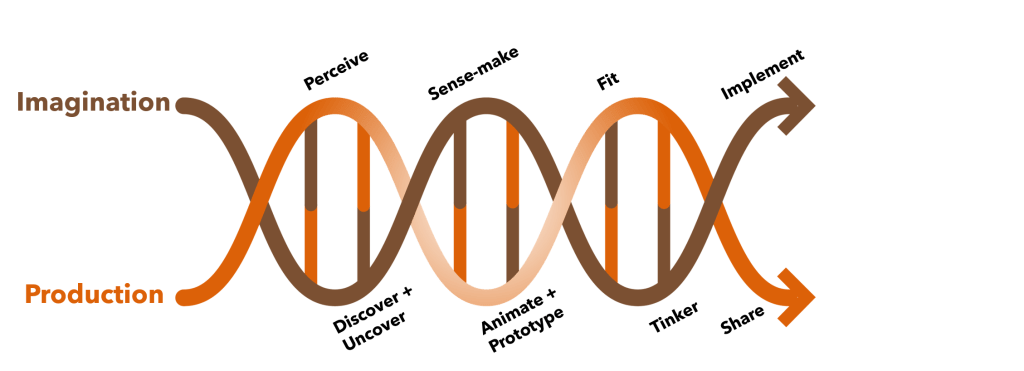This is an Eval Central archive copy, find the original at cense.ca.

Design Thinking is the process we use to conceive of our products and guide the process of design. Design is . This is the design journey. The benefits to engaging with design thinking go beyond the outcomes and include a variety of outputs.
Design thinking is a human-centered approach to innovation that draws from the designer’s toolkit to integrate the needs of people, the possibilities of technology, and the requirements for business success. There are several popular models of design thinking that are widely used in many industries. Here are some of the most common ones:
- Stanford d.school’s 5-Stage Model: Stanford d.school is known for its five-stage model of design thinking. The stages are Empathize, Define, Ideate, Prototype, and Test. Each stage is intended to be flexible and iterative, allowing designers to move back and forth between stages as needed.
- IDEO’s 3 “I” Model: IDEO, a global design company that popularized design thinking, uses a simplified three-stage model: Inspiration, Ideation, and Implementation. Inspiration is the problem or opportunity that motivates the search for solutions; Ideation involves generating, developing, and testing ideas; and Implementation brings the project to life.
- Double Diamond Model by the British Design Council: This model breaks down the design process into four distinct phases – Discover, Define, Develop, and Deliver. The model’s visual representation shows two diamonds, where each diamond represents a problem-solving stage – problem definition and solution generation.
- IBM’s Loop Model: IBM’s design thinking model uses a loop system with three main stages: Observe, Reflect, and Make. The stages repeat in a continuous loop, representing the iterative nature of design thinking. IBM also includes principles like focusing on user outcomes, restlessly reinventing, and embracing diversity.
- Google Ventures’ Design Sprint: Google Ventures (GV) developed a five-day process for answering critical business questions through design, prototyping, and testing ideas with customers. The five stages are Understand, Sketch, Decide, Prototype, and Validate. This model is often used for fast prototyping and user testing.
- The 4D Model by Nigel Cross: Nigel Cross, a notable scholar in design studies, proposed a simplified four-stage model: Discover, Define, Develop, and Deliver. This model is often employed in product and industrial design.
- The Design Helix by Cameron Norman and Cense. This is our in-house model designed for living systems and draws on many of the other models. It guides our work and reflects an evolutionary, naturalized, dynamic design process.

Each model has its strengths, and the best one to use can depend on the context and specific needs of the project. It’s also worth noting that while these models provide structure to the design thinking process, design thinking is often more fluid and non-linear than these models suggest.
The Design Helix model assumes that the process gets repeated over time, distinguishing it from other models. It embeds ongoing learning into the model until the purpose or need for the design is completed.

Participation, Co-Creation and Public Engagement
Whatever model you choose, consider that the process of design is often best achieved when it is done with high involvement of the perspective of the intended audience or user. Models like participatory design and co-design are ways to engage those who we are designing things for and are affected by what we create in the design process. This is about designing with, not just for, people.
Below are how the models use collaboration and co-creation:
Collaboration, participation and co-design are integral to most design thinking models but might not always be explicitly outlined. Here’s how collaboration and co-design are represented in each model:
- Stanford d.school’s 5-Stage Model: Collaboration is inherent in all stages, especially in the Empathize stage, where designers work closely with users to understand their needs and experiences. Also, the Ideate stage encourages brainstorming with a diverse group of people to generate a wide range of ideas.
- IDEO’s 3 “I” Model: Collaboration is embedded in all stages. Designers collaborate with stakeholders and users during the Inspiration stage to gather insights. In the Ideation stage, diverse teams work together to generate and refine ideas. The Implementation stage often involves collaboration between designers, users, and other stakeholders to bring the solution to life.
- Double Diamond Model by the British Design Council: Collaboration is crucial in the Discover phase, where designers work with users to understand their needs and experiences. The Develop phase is also highly collaborative, as designers work with each other and stakeholders to refine and improve ideas.
- IBM’s Loop Model: The Observe stage involves close collaboration with users to understand their needs. The Reflect stage encourages diverse teams to come together to understand what they’ve observed. The Make stage often involves co-design with users to ensure the solution meets their needs.
- Google Ventures’ Design Sprint: The Understand and Sketch stages involve collaboration between the design team and other stakeholders to define the problem and generate potential solutions. The Decide stage involves collaboration to choose the best ideas, and the Validate stage involves testing the solution with users.
- The 4D Model by N. Cross: Similar to the others, collaboration is inherent in all stages, particularly in the Discover and Develop phases, where designers work closely with users and other stakeholders.
- The Design Helix Model recognizes the benefit of high engagement but does not argue for any specific place for engagement. It recognizes that participation and involvement in the design process is a benefit and often critical to a design, yet it may be difficult or impossible to achieve as desired. Designers must work to determine the strategic and ethical considerations involved in each design process.
In all these models, co-design typically happens during the ideation and prototype stages. Co-design is a process where designers and users (or other stakeholders) work together to create a solution that meets the users’ needs. The idea is that involving stakeholders and prospective ‘users’ in the design process will make the final product more user-friendly and effective.
Design Thinking is a powerful process to channel creativity and facilitate innovation. If you want to implement it in your organization, let’s have a coffee and chat.
The post Models of Design Thinking appeared first on Cense Ltd. .